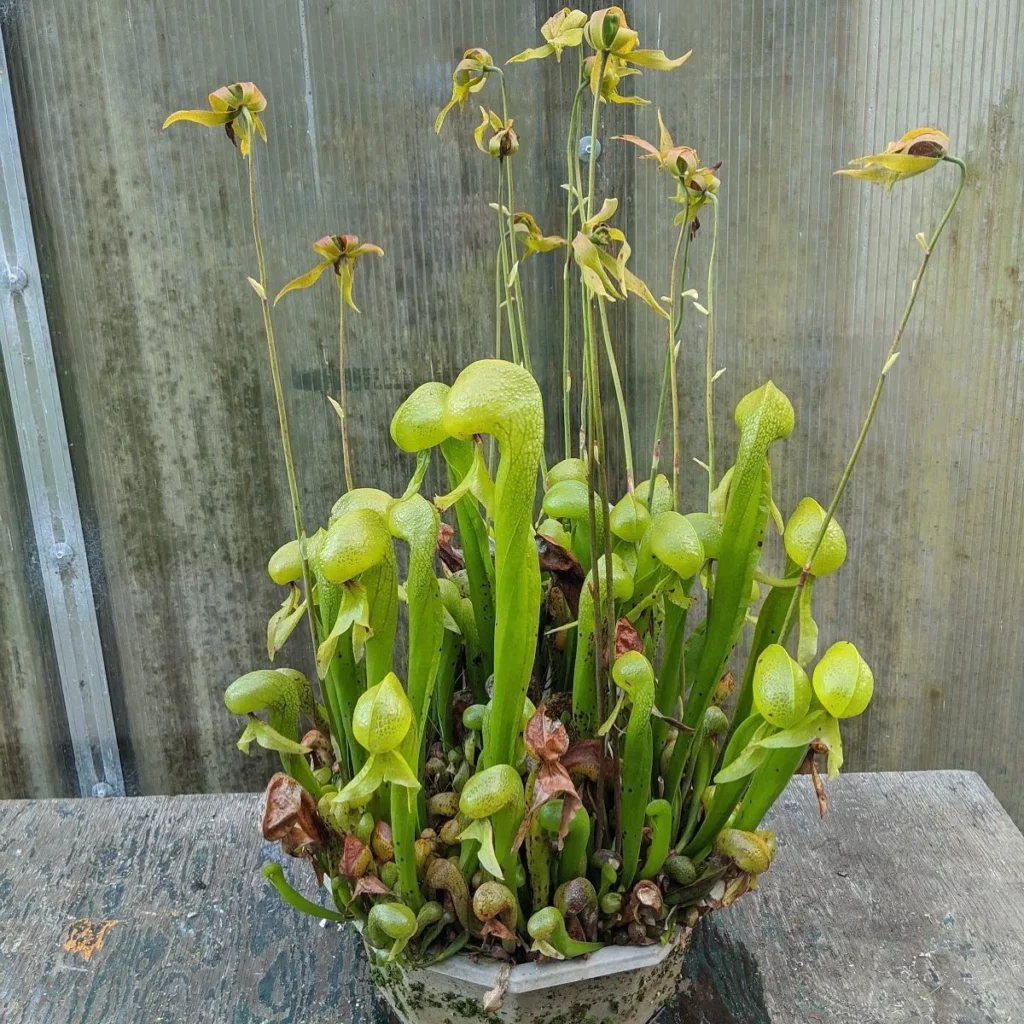
Pitcher Plants – The Comprehensive Resource Online
Pitcher plants are exceptional additions to any plant collection. There are many types of Pitcher Plants which all belong to a unique group known as carnivorous or insect-eating plants, and they are renowned for their distinctive pitcher-shaped leaves that serve as natural traps for unsuspecting insects.
Among the captivating world of pitcher plants, you’ll find the Cobra Pitcher Plant, Monkey Cup Pitcher Plant, and Trumpet Pitcher Plant.
Pitcher plants come in various species, each with its own charm, but they all share a common trait: the ability to lure, capture, and digest insects, making them a truly fascinating and unusual choice for houseplant enthusiasts.
What sets pitcher plants apart is their remarkable adaptation to nutrient-poor environments. In the wild, they thrive in areas with low soil fertility by supplementing their diet with insects.
When cultivated as houseplants, they continue to demonstrate their carnivorous prowess, offering a captivating display as they catch and digest insects within their tubular-shaped pitchers.
This unique behavior not only adds a fascinating aspect to your indoor garden but also serves as a natural pest control method, keeping unwanted insects at bay.
Pitcher plants require specific care, such as distilled water and high humidity, but their exotic appearance and interactive feeding habits make them an unforgettable and educational addition to any home.
With their otherworldly beauty and insect-capturing abilities, pitcher plants are not just houseplants; they’re living marvels that spark curiosity and wonder.
Darlingtonia californica, commonly known as the Cobra Pitcher Plant, is a visually stunning and captivating plant. Its unique physical characteristics make it stand out among other plants in any collection. Appearance of Darlingtonia californica The standout feature of Darlingtonia californica is its cobra-like pitcher-shaped leaves. These pitchers can grow up to 3 feet tall and …
Cobra Pitcher Plant: Darlingtonia californica Care and Cultivation Read More »


